From the Isles of Scilly to Shetland, the geographical spread of Britain’s 6,000 islands ensures vast differences of climate and culture, landscape and language. Here, we explore the most diverse
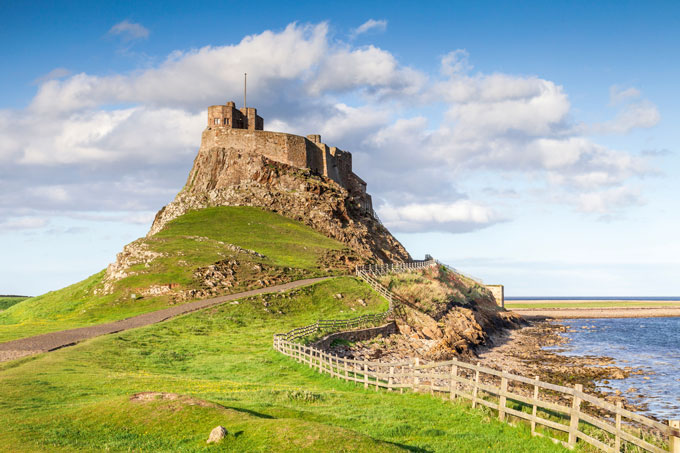
Land’s End marks the last part of the British mainland, yet in terms of islands, it is only the beginning. Just 28 miles off the Cornish coast, the Isles of Scilly are like splashes from an artist’s brush, tiny dollops of land cast onto a turquoise canvas like a westerly afterthought. The landmass of these islands is tiny, yet they, like all Britain’s islands, contribute enormously to the character of our shores, doubling the length of the coastline. (According to Ordnance Survey the length of Britain’s coastline is 11,073 miles excluding islands and 19,491 miles including principal islands).
The first place you are likely to see in the Scillies is St Mary’s, the main island, which is home to three quarters of the population of the isles. With its galleries, gift shops and garrison, there is plenty to occupy visitors for a day or two, and it makes a convenient base for exploring the other four islands.
Tresco is famous for its Abbey Gardens, known as ‘Kew with the roof off’, which make the most of the mild Gulf climate to cultivate 2,000 sub-tropical species. The privately owned island is manicured, with luxurious accommodation and direct helicopter access from Penzance.
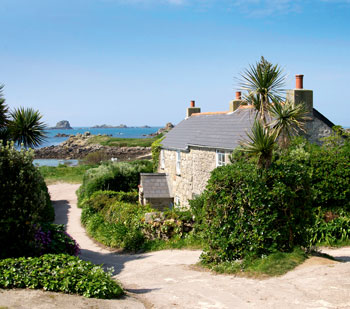
If you’re looking for a good hotel, Hell Bay on Bryher could be paradise. With four stars the hotel and restaurant are the highest rated on the isles. Bryher’s east coast is sheltered; whilethe west, directly exposed to the Atlantic, is perfect for sunsets and watching storms.
Just a mile wide, St Agnes is a rural haven of flower farms and unspoilt rocky shores.
There are no hotels, just bed-and-breakfasts and self-catering cottages making it ideal for a peaceful escape. Take time to walk across the sand bar to Gugh, buy ice cream in Troytown Farm shop or visit the UK’s most south-westerly lighthouse.
All the islands have Caribbean-style beaches; St Martin’s has some of the best with its pale sand. Great Bay is wild and beautiful; Par Beach backs onto vineyards, and Lawrence’s Bay is family friendly.
When Thomas Telford built a suspension bridge over the Menai Straits in 1826, Anglesey became an integral part of Wales. For walkers, the 125-mile Isle of Anglesey Coastal Path passes through a terrain of heath, dunes, cliffs and six Blue Flag beaches, while the 13th-century Beaumaris Castle is a UNESCO World Heritage site, with symmetrical concentric walls and views of Snowdonia.
A Crown dependency, the Isle of Man has the oldest continuous parliament in the world, the Tynwald, and is a fusion of Celtic and Viking culture. Located in the middle of the Irish Sea, the name is thought to come from Manannan Mac Lir, a Celtic sea god, who covered the island with mist to hide it from invaders. Take the steam railway south from Douglas, the capital, to sandcastle beaches at Port Erin, visit medieval Castle Rushen and the remains of Rushen Abbey or try to spot fairies in one of the island’s 18 verdant glens. At the end of May 37 miles of island roads become a racetrack for the TT motorcycle races, an event that has taken place since 1907.
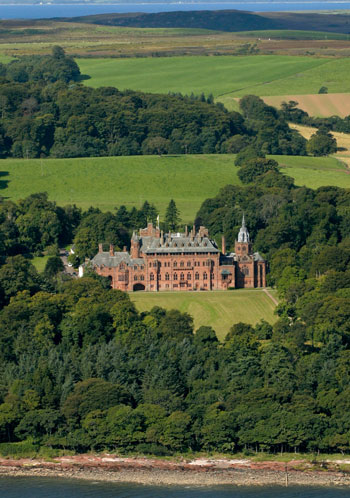
Just 30 minute’s drive from Glasgow, Inchmurrin offers blissful views across Loch Lomond to the Trossachs. Water sports enthusiasts can canoe, water ski, or wind surf, while a paddle steamer, motor yacht and sea plane offer more relaxed ways to see the loch. The largest freshwater lake island in Britain, Inchmurrin was a deer park during the 18th century and is still covered with trees.
Few places have public lavatories on their must-see list, however, Bute’s Victorian conveniences, with mosaic floors and Twyford fittings, are a quirky attraction. Set in the Firth of Clyde, day-tripping distance from Glasgow, Bute has an annual Jazz Festival, has three golf courses and is home to Mount Stuart, one of Britain’s finest Gothic mansions, which boasts the country’s first indoor swimming pool.
Known as ‘Scotland in Miniature’, Arran has an element of everything you would expect from a Scottish island with a mountainous interior, beaches, fishing villages, castles and woodland. The largest island in the Forth of Clyde, Arran has been inhabited since Neolithic times, and relics include the Machrie Moor Standing Stones and cairns near Lamlash.
With nine distilleries, Islay in the Inner Hebrides is the island for a dram. Famous for its peaty malts, Islay has Scotland’s newest distillery, Kilchoman, which uses barley grown in surrounding fields. Watch the sun set into the Atlantic at Saligo Bay, before heading to the cosy bar at Port Charlotte to sample the local produce.
In Barra, beach landing slots of BA’s Twin Otter are determined by the tides and according to Highlands and Islands Airports, ‘When not in use, the runways at Barra airport are often used by kite surfers’. One of the Outer Hebrides’ smallest inhabited islands, Barra is also one of the most beautiful with white sands, acres of machair grass and over 1,000 species of wildflowers.
From the Old Norse for ‘high land’, Harris is dominated by mountains formed on one of the oldest rocks in the world, Lewisian Gneiss. Harris is famous for its tweed, which is also made on Lewis, the next island north. Luskentyre is the island’s most spectacular beach, a white and turquoise expanse, with views towards Taransay, the island from the BBC programme Castaway.
Visit the Summer Isles in spring when bright yellow gorse is flowering or, in summer, Loch Broom is idyllic for kayaking or sailing, with boat rentals from the Isles of Tanera Mòr, the only inhabited island. Stay in holiday cottages on Tanera, visit for a day, or take a cruise around the isles. The mountains of the Coigach are, perhaps, most beautiful in autumn and winter, when snow covers peaks, days are short and the wilderness is empty.
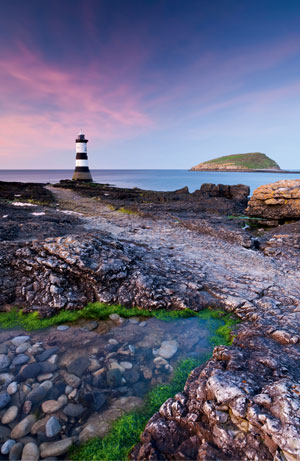
Up Helly Aa is the name of Europe’s largest fire festival, a mid-winter celebration of Shetland’s Viking culture where ‘Jarls’ process through Lerwick with flaming torches before burning a wooden ship. Colonised by Vikings in the 8th century, Shetland was ruled by Scandinavia for over 500 years, coming to Scotland as a dowry. Comprised of over 100 islands, the Shetlands are on the same latitude as Oslo and contain over 5,000 archaeological sites including Jarlshof, one of the best preserved Bronze Age settlements in the world.
Joined to the Northumbrian coast by a causeway at low tide, Holy Island (Lindisfarne) has been a place of Christian pilgrimage since St Cuthbert founded the first priory there in the 8th century. The Lindisfarne Gospels, illuminated manuscripts produced during this era, are kept in the British Library; however, you can see paper and interactive copies in the Heritage Centre. Dating back to the 12th century, the giant pink stone ‘rainbow arch’ of the Benedictine Monastery gives a glimpse of how important the site was. Lindisfarne Castle, a Tudor fort converted into a house by Edward Lutyens, has gardens designed by Gertrude Jekyll.
The Isle of Wight has been a popular British holiday destination since the 19th century when Queen Victoria summered at Osborne House. Famous visitors include Charles Dickens who wrote David Copperfield on the island and Charles Darwin who started On the Origin of Species here. The island’s most iconic landmark is the Needles, a series of stacks formed where a chalk seam juts out into the sea, however, over half the island is designated an Area of Outstanding Natural Beauty and its fossil-rich cliffs also have Heritage Coast status. As the host of Cowes Week, Britain’s largest sailing regatta, and Bestival, a four-day seaside Glastonbury, the island still attracts a diverse audience. There is only one way to get to Burgh Island, Devon, at high tide and that is by sea tractor, over the causeway from Bigbury-on-Sea.
Agatha Christie fans will know Burgh better as Smugglers’ Island from Evil Under The Sun, a novel she wrote at Burgh. The Burgh Island Hotel is a homage to the 1930s with Art Deco furnishing, an elegant Palm Court bar and rooms named after guests including Noel Coward and Wallis Simpson.
Neither part of the UK nor the EU, the Channel Islands are Crown dependencies with their own parliaments, legal systems and even their own languages, Dgèrnésiais, Jèrriais and Sercquiais, although everyone now speaks English. The islands belonged to the Duchy of Normandy in 1066 when William the Conqueror invaded England and in 1204 when Normandy joined the Kingdom of France, the Channel Islands pledged allegiance to England.
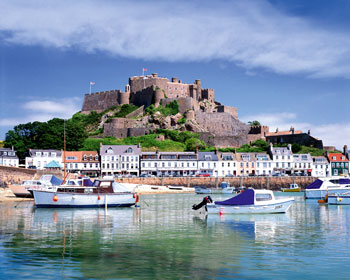
The threat of invasion from France was particularly great during the 18th century and the islands were fortified with Martello towers and forts, however the biggest military installations came during the German Occupation from 1940-45. Slave labourers from across Europe were forced to build huge sea walls to prevent the allies landing.
Depicted in The Guernsey Literary and Potato Peel Pie Society, a bestselling novel about the Occupation, Guernsey was also home to the exiled French writer Victor Hugo in the 1850s. You can visit Hauteville House, where Hugo wrote Les Misérables, see the world’s smallest consecrated chapel, Little Chapel, take in the Noon Day Gun at Castle Cornet or just enjoy wandering around St Peter Port, the picturesque main town.
The third largest Channel Island, Alderney feels like Cornwall might have 50 years ago. St Anne, the main settlement, is a good-sized village, with elegant Georgian houses and cottages painted in ice-cream shades. You can cycle around the island in a day, or take a week picnicking on every beach.
A feudal state until 2008, Sark is car-free, and the 600 residents rely on bicycles, horses and even a ‘toast rack’, a tractor-driven carriage, to get around. Many old hotels have been recently renovated and offer luxurious accommodation with excellent local seafood, island-grown vegetables and from next year, even Sark wine. The Seigneurie Gardens are a delight, as is a day trip to Brecqhou, the nearby private island owned by the Barclay Brothers.
Jersey, the largest of the islands, is an important offshore financial centre and St Helier has a cosmopolitan vibe with its marina, al fresco bars and smartly dressed residents. Less than five minutes from town you can lose yourself in a network of tiny country lanes, passing pink granite cottages and countless small fields of Jersey Royals. After an afternoon walking the cliff paths on the north coast, or relaxing on a golden sandy beach like St Brelade’s Bay, head to Gorey, a small fishing port, where you can enjoy dinner or drinks looking at Mont Orgueil.
It’s over 100 miles from Jersey back to the mainland, a journey which takes over four hours by ferry or just 35 minutes by air. But in Britain, when you say goodbye to one island, you’re just about to say hello to another.

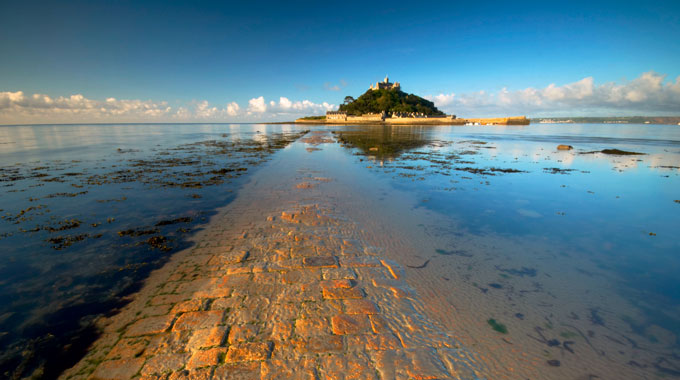




 © 2024
© 2024